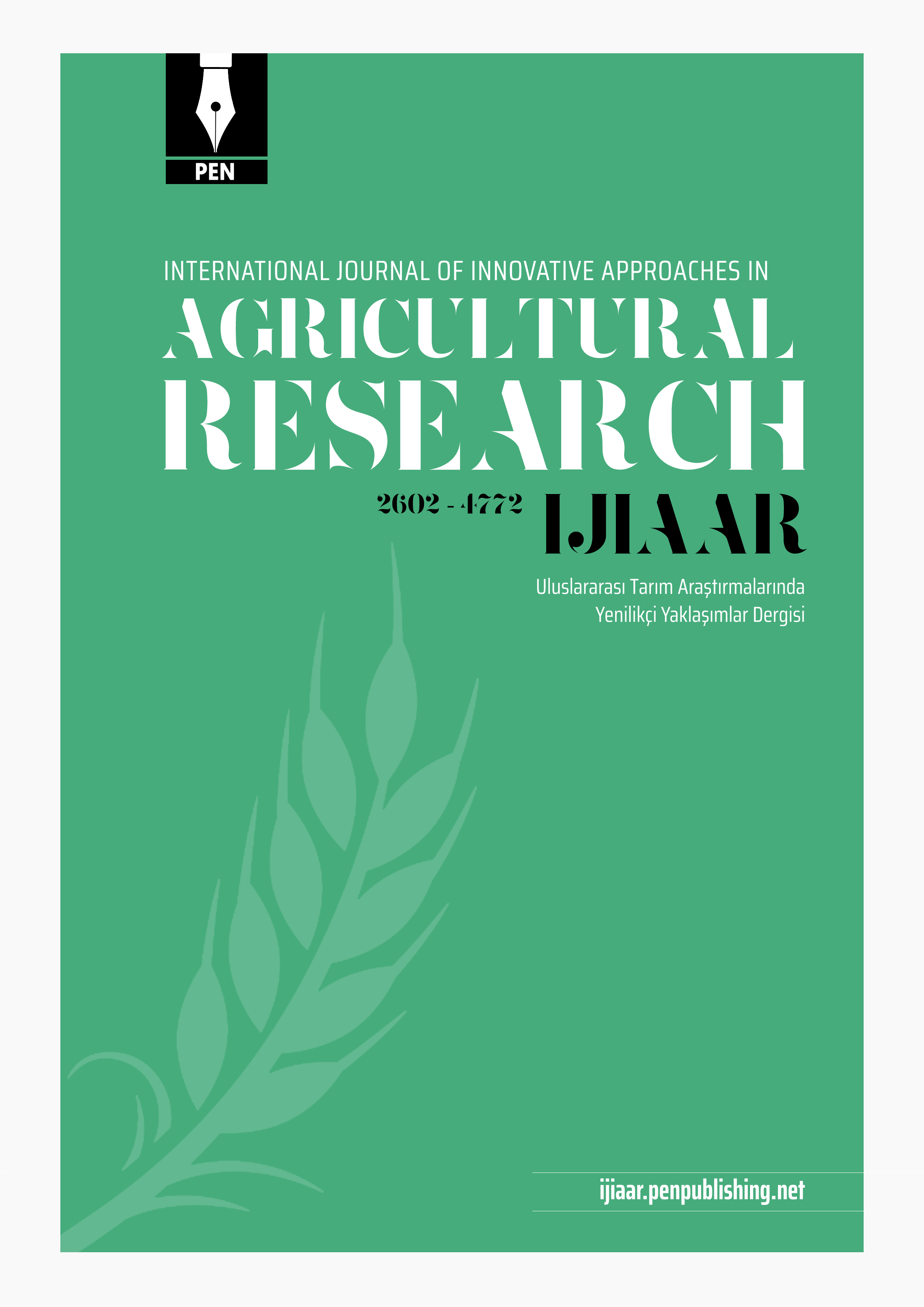
Uluslararası Tarım Araştırmalarında Yenilikçi Yaklaşımlar Dergisi
Yazarlar: Evgeni Petkov, Teodora Popova , Maya Ignatova
Konular:-
DOI:10.29329/ijiaar.2018.174.9
Anahtar Kelimeler:Crossbred slow-growing lines,Pasture access,Carcass quality,Meat chemical composition,Fatty acid profile
Özet: The study was carried out to compare the carcass quality, meat chemical composition and its fatty acid profile in two slow-growing crosses obtained from La Belle (LB) and Bresse Gauloise (BB) parents, reared in conventional or alternative system with pasture access. At the age 12 weeks, male chickens (n=6) of each cross were slaughtered. Two-way ANOVA was used to assess the effect of the rearing strategies as well as the crossbreed on the carcass quality and meat chemical and fatty acid composition. The live and carcass weight of both crosses, as well as the dressing percentage were influenced mostly by the rearing system, showing advantage of the indoors grown birds. Despite the reduced values of these parameters, no deposition of abdominal fat was detected in the pastured birds from both crosses, which is a positive influence of the outdoors system observed in the particular crosses. In regard to the chemical composition of the meat, the pasture access decreased the protein content in both breast and thigh meat (P<0.001) but increased the moisture (P<0.001). The cross and the rearing system had different effect on the fatty acid composition of the meat and the related lipid indices, associated with its dietetic quality. While the thigh meat was mostly affected by the cross of the chickens, showing higher content of monounsaturated fatty acids (MUFA) (P<0.01) but lower in polyunsaturated fatty acids (PUFA) (P<0.05) in the ♂BBx♀LB birds, the fatty acid of the breast meat, showed different response according to the crossbreed and the rearing system. The differences were more pronounced in the ♂LBx♀BB, indicating certain advantage of the pastured chickens from this cross with lower content of saturated fatty acids (SFA) but higher of PUFA and improved values of the polyunsaturated/saturated fatty acids (P/S) and n-6/n-3 PUFA ratios.